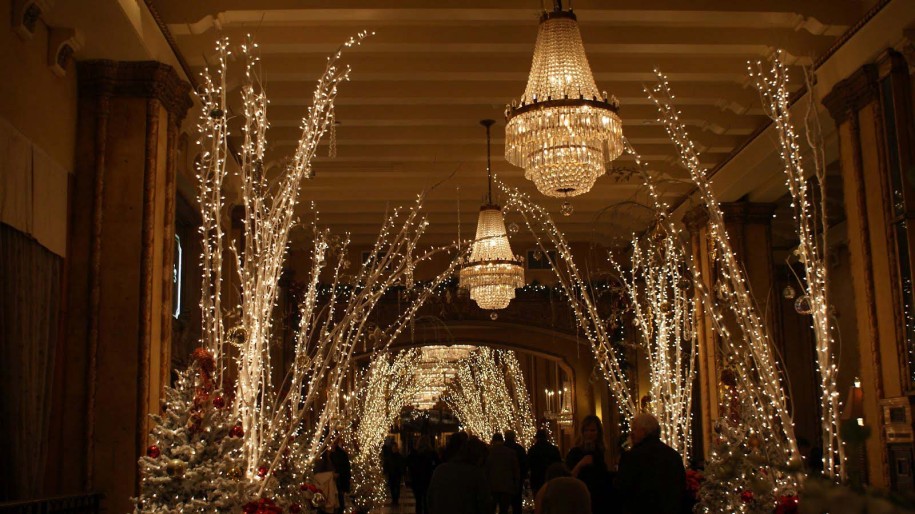Is it necessary to put it in a dark place to change color? The experts respond. December 12 is Poinsettia Day. On this day, which was born in the United States more than a century and a half ago, it is customary to give poinsettias to loved ones to wish them the best for Christmas and the coming year. Why December 12? Because that day, in the year 1851, died Joel Roberts Poinsett, the American botanist and statesman who became the first ambassador of this country in Mexico and who took this flower to North America to decorate his Christmas.

There is no doubt, the poinsettia is one of the protagonists of all Christmas decorations, but how much do you know about this red plant? Not all of them are red to begin with. In this guide, the experts at Stars for Europe explain some of the most common myths about it.
1. Poinsettia is poisonous: FALSE

Unless you eat a whole bucket of them, poinsettias won’t make you sick one bit. They belong to the euphorbia family (their Latin name is Euphorbia pulcherrima ) and their milky sap does not cause skin irritation. POISINDEX, one of the largest poison control centers, states that a 20-kilo child would have to eat about 500 leaves to accumulate levels of harmful toxins according to some experiments.
2. Poinsettias don’t last long: FALSE

If you follow the basic rule of not overwatering it, avoid placing it in a draft and place it in a warm place with lots of light, your poinsettia will remain perfect after Christmas.
3. All poinsettias are red: FALSE

Although red are the most traditional, the best-selling and the most widespread in the world, specialists in the cultivation of these plants have worked hard in recent years to create white, cream, multicolored, pink, peach and Salmon.
4. I have to keep my poinsettia all year long: FALSE

The poinsettia is one of the basic Christmas decorations, as classic as the tree, but once these dates are over you have total freedom to place it in the compost bin. Getting your color to look good again is very tricky (leave the hard work to the experts).
5. Poinsettias are known as “Christmas stars” in most of the world: TRUE

Due to its color and the starry shape its leaves create, the poinsettia has become known as the “Christmas star” in many languages, such as Italian (Stella di Natale) or German (Weihnachtsstern).
6. Poinsettia flowers are small fruits: TRUE
The large, colorful leaves of the poinsettia are often mistaken for flower petals. The flowers are actually the small, yellow fruits in the center of each bunch of leaves and are called cytos.
7. Poinsettias can be used as cut flowers: TRUE

Cut poinsettias are very long-lasting and highly decorative flowers. You just have to cut the stem and put it in boiling water for 20 seconds to seal it before putting it in cold water. The cut flower will last at least a week in the vase, arrangement, and florist foam in which you put it.
8. The name of the poinsettias comes from Mr. Poinsett: TRUE
As we explained in the introduction, Don Joel Roberts Poinsett was an American diplomat, botanist and physicist who discovered the poinsettia during a stay in Mexico, and sent some cuttings to South Carolina. On December 12, International Poinsettia Day, his death is commemorated.
9. The association between poinsettia and Christmas began in Mexico: TRUE

In the 16th century, the legend of a Mexican girl named Pepita and of a Christmas miracle arose. The girl was so poor to buy a gift for Baby Jesus on Christmas Eve that she picked up a bouquet of green leaves from a bush on her way to church and tied them in a bouquet. When he placed his present at the foot of the altar, the leaves turned a splendid red color. The poinsettia became known as the Flower of Christmas Eve, and it became the official Christmas flower in Mexico.
10. Poinsettia needs darkness to change color: TRUE
Poinsettias need 12-hour periods of darkness a day for their leaves to turn from green to final color. In the UK, this happens naturally in winter as the night lasts for half the day, for this reason you can only start to see poinsettias for sale from November. In other European countries this process is stimulated before with dark conditions inside greenhouses.










